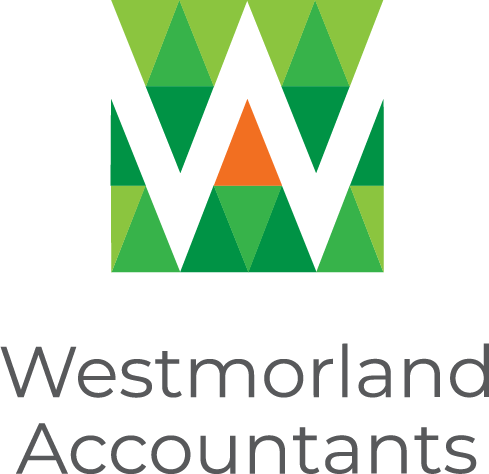
26 Feb CIS VAT Reverse Charge – Construction
The CIS VAT domestic reverse charge measure will apply to supplies of construction work from 1 March 2021. The measure was due to commence in 2019 but has been delayed due to Brexit and the Coronavirus.
Apply the reverse charge when all the following are met:

The CIS reverse charge does not apply to any of the following supplies:
- Supplies of VAT exempt building and construction services.
- Supplies that are not covered by the CIS, unless linked to such a supply.
- Supplies of staff or workers.
The CIS reverse charge does not apply to taxable supplies made to the following customers:
- A non-VAT registered customer.
- ‘End Users’ i.e. a VAT registered customer who is not intending to make further on-going supplies of construction.
- ‘Intermediary suppliers’ who are connected e.g. a landlord and his tenant or two companies in the same group.
The aim of the measure is to reduce VAT fraud in the construction sector.
It will require a significant change of approach in many CIS businesses:
- Accounting and bookkeeping systems will need to be modified to cope with the new invoicing and reporting obligations.
- The use of the VAT Flat Rate Scheme and Cash accounting may not be possible
- Cash flow will be affected and those at the start of the supply chain may become VAT repayment claimants: they need to consider whether to file monthly returns.
- It may require a business that is the recipient of the supply to VAT register.
Example: How the CIS reverse charge works
Oliver the Roofer (who is VAT registered) supplies the materials and roofs a new office building for Mr Contractor who (who is also VAT registered) and in turn supplies its construction services to Ms Developer (also VAT registered). Ms Developer finds and develops land and will, in this case, bring the build to completion and supply a finished commercial building to Enduser, its client.
- John the Roofer would under the old VAT system, invoice Mr Contractor £120,000, comprising of his £100,000 bill for materials, labour and works, plus £20,000 in VAT (at 20%).
From March 2021, under the new CIS reverse charge mechanism, he invoices £100,000. His invoice states that ‘the CIS reverse charge applies’ and that the applicable rate of VAT is 20%.
- Mr Contractor pays John the net £100,000 fee. It then accounts for output and input VAT of £20,000 on the supply on its own VAT return.
- John does not account for output VAT in his accounting system as he has invoiced only his fee £100,000.
- As a consequence of the reverse charge procedure, John charges and receives £20,000 less than under the old system (where he would charge £100,000 + VAT). He does not have to account to HMRC for any output tax on the transaction.
- When he is paid by he includes the value of the sale in box 6 of his VAT Return. He does not add VAT to box 1 as he receives no output VAT.
- The change may well impact John’s cash flow, as under the old rules, if Mr Contractor was a prompt payer he could hope that he could use the £20,000 in VAT to purchase his materials. He could then purchase his materials and offset the input tax paid against his output liability.
- Mr Contractor has a cash flow advantage, it does not have to pay John £20,000 and then at the end of its VAT quarter it cannot reclaim £20,000 as it is accounting for the reverse charge and the output VAT offsets the input VAT.
- As Mr Contractor is supplying CIS services it must also consider the reverse charge. Will its client (Ms Developer) be involved in the onward supply of CIS services? In this case, this may be difficult to determine as apparently Ms Developer is selling a finished building to Enduser as an investor and the reverse charge does not apply. It is Ms Developer’s responsibility to notify down the supply chain.
What services are within the CIS reverse charge?
- Constructing, altering, repairing, extending, demolishing or dismantling buildings or structures (whether permanent or not), including offshore installation services.
- Constructing, altering, repairing, extending, demolishing of any works forming, or planned to form, part of the land, including (in particular) walls, roadworks, power lines, electronic communications equipment, aircraft runways, railways, inland waterways, docks and harbours.
- Pipelines, reservoirs, water mains, wells, sewers, industrial plant and installations for purposes of land drainage, coast protection or defence.
- Installing heating, lighting, air-conditioning, ventilation, power supply, drainage, sanitation, water supply or fire protection systems in any building or structure.
- Internal cleaning of buildings and structures, so far as carried out in the course of their construction, alteration, repair, extension or restoration.
- Painting or decorating the inside or the external surfaces of any building or structure.
- Services which form an integral part of, or are part of the preparation or completion of the services described above. This includes site clearance, earth-moving, excavation, tunnelling and boring, laying of foundations, erection of scaffolding, site restoration, landscaping and the provision of roadways and other access works.
Excluded services
- Drilling for, or extracting, oil or natural gas.
- Extracting minerals (using underground or surface working) and tunnelling, boring, or construction of underground works, for this purpose.
- Manufacturing building or engineering components or equipment, materials, plant or machinery, or delivering any of these to site.
- Manufacturing components for heating, lighting, air-conditioning, ventilation, power supply, drainage, sanitation, water supply or fire protection systems, or delivering any of these to site.
- The professional work of architects or surveyors, or of building, engineering, interior or exterior decoration and landscape consultants.
- Making, installing and repairing artworks such as sculptures, murals and other items that are purely artistic.
- Signwriting and erecting, installing and repairing signboards and advertisements.
- Installing seating, blinds and shutters.
- Installing security systems, including burglar alarms, closed-circuit television and public address systems.
Certain services can become included
- If there is a reverse charge element in a supply, then the whole supply will be subject to the domestic reverse charge.
- If there has already been a reverse charge service between two parties on a construction site, and if both parties agree, any subsequent construction supplies on that site between the same parties can be treated as reverse charge services.
- If there is doubt whether a type of works falls within the definition of a specified service, as long as the recipient is VAT registered and the payments are subject to CIS, the reverse charge should apply.
- The contractor is asked to consider all construction contracts with a sub-contractor. If they can see that reverse charge applies to more than 5% of contracts (by volume or value) with that sub-contractor, then the reverse charge may be applied to all the contracts.
HMRC example
- A joiner constructing a staircase offsite and then installing it onsite is making a reverse charge service, even if the charge for installation is only a minor element of the overall charge.
Treatment of existing contracts to be ready for 1 March 2021
The VAT treatment is determined for payments due on any supplies entered into your accounting system before 1 March 2021, but paid on or after 1 March 2021.
| Date entered in customer’s accounting system | Date payment made | VAT Treatment |
|---|---|---|
| Before 1 March 2021 | On or before 31 May 2021 | Normal VAT rules |
| Before 1 March 2021 | On or after 1 June 2021 | Domestic reverse charge |
| On or after 1 March 2021 | On or after 1 March 2021 | Domestic reverse charge |
For contracts starting after 1 March 2021, you should decide whether the reverse charge applies from the start of the contract.
VAT schemes
- Cash accounting cannot be used for CIS reverse charge.
- Businesses will need to review their schemes.
- If a business is likely to become a VAT repayable business it will be beneficial for it to move to monthly VAT returns
VAT payment
- Where both the supplier and the recipient are VAT registered or should be VAT registered, the recipient is liable to account for and pay the VAT to HMRC on behalf of the supplier.
- The supplier will not make a VAT payment on those supplies.
Invoices
When supplying a service subject to the CIS reverse charge, suppliers must show all the information that is normally required on a VAT invoice, except that:
- A note on the invoice must make clear that the CIS reverse charge applies and that the customer is required to account for the VAT.
- No VAT is charged on the invoice.
- It should state how much VAT is due under the reverse charge, or the rate of VAT if the VAT amount cannot be shown, but that VAT should not be included in the amount charged to the customer
If you have any questions please get in touch.

